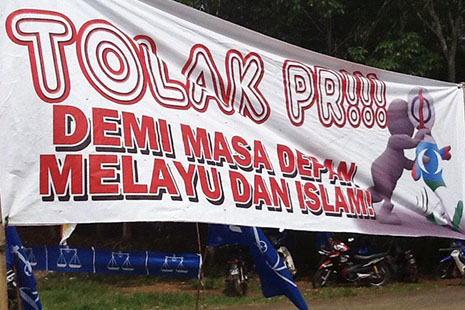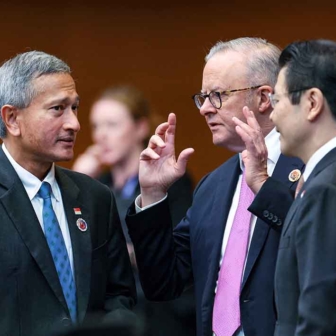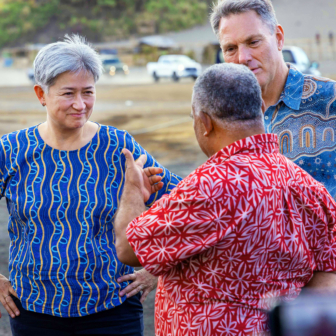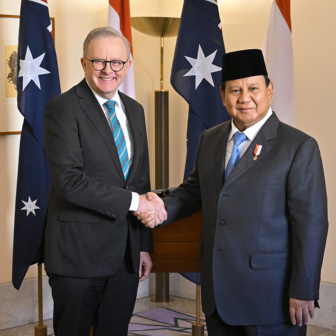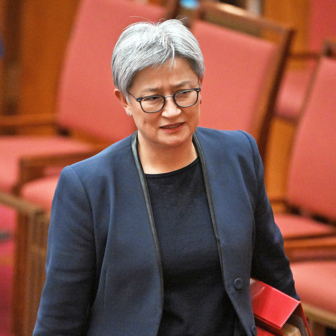THIS was supposed to be the “change” election in Malaysia, and in one respect it was: the opposition Pakatan Rakyat coalition, or PR, received a majority of the vote, even if the rural gerrymander means that the ruling Barisan Nasional coalition (National Front, or BN) retains 60 per cent of the seats. But on a lightning trip through all of Malaysia’s states during the two weeks of the campaign, I saw first-hand some of the stark political divisions that cleave Malaysian society and help explain the election outcome.
Some of the most memorable moments came at campaign events in opposition strongholds. In spirited rallies in both Chinese majority urban areas, and in the deeply Malay – and deeply Islamic – city of Kuala Terangganu on the east coast of the Peninsula, the mood for change was palpable. Huge and passionate crowds gathered, responding enthusiastically to the calls of “ubah” (change) and “ini kalilah!” (it’s time!).
But such rallies were also remarkable for how different they were from each other. Along the deeply Islamic east coast, the main opposition party is PAS, the All-Malaysia Islamic Party. At one huge rally we attended in Terengganu state, the crowd was almost entirely Malay; people sat cross-legged on the ground on mats they had brought for the occasion. The drawcard speaker was Azhar Idrus, a popular ustad, or religious teacher, who explained the failings of the government and the necessity for change in an earthy style expressed in an Islamic idiom. In the rallies of the DAP (Democratic Action Party), 90 per cent of the campaign speeches were in the various Chinese languages, and 90 per cent of the crowds were Chinese. There, people sat on plastic stools, or stood.
Forging unity on the flanks
The American political scientist Donald Horowitz has memorably described how the logic of Malaysia’s system produces incompatible “flank” parties within the opposition. With the governing coalition consisting of parties of the Malay, Chinese and Indian elites occupying the middle ground, so this analysis goes, the opposition is driven out to the margins of the ethnic extremes. PAS appeals to a mostly Malay constituency which is disillusioned with the government’s perceived failure to address Malay disadvantage or honour their Islamic religion; Chinese voters who feel the government is discriminating against them turn to the DAP. As a result, and put very crudely, Malaysian elections often have a sort of pendulum logic to them: when the opposition mood strikes the Malays, Chinese voters fear resurgent Malay nationalism or Islamic fundamentalism might harm their interests, and so support the government. The same logic operates in reverse: when the Chinese desert the government, Malays tend to swing back.
Since 1999, however, the opposition parties have been attempting to overcome this logic and to forge cross-ethnic unity. The elections this year marked a definite step forward in this process, with the Pakatan Rakyat coalition able to constitute a coherent alliance that agreed to avoid three-cornered fights and pool resources to campaign for single candidates in almost all constituencies. It promoted an alternative discourse about national politics, trying to shift the debate away from sectional and ethnic representation toward a focus on the government’s corruption and economic management, and trying to forge a new style of pan-racial and pan-religious politics. (On the latter, see Amrita Malhi’s recent analysis for Inside Story.) Some of the most striking moments on the campaign trail involved Malay volunteers campaigning on behalf of DAP candidates and Chinese volunteers working for their Malay opposition partners.
To be sure, the BN tried hard to break this model and apply the old logic of ethnic politics. In particular, its advertisements and campaign speeches directed at Chinese voters tried to play up fears about PAS, warning of the dangers of Islamic extremism if the opposition won. In what was a blatant scare campaign, Chinese voters were warned that a vote for the DAP equalled a vote for PAS.
The campaign to scare the Chinese failed: urban Chinese voters largely deserted the BN, and DAP did the best of all the opposition parties, winning thirty-eight seats, up from twenty-eight in 2013. Prime minister Najib Razak has since described the government’s losses in this election as being the result of a “Chinese tsunami” and warned that “polarised” voting trends would be “dangerous” for the country. At one level, the analysis is accurate, for it is clear that Chinese majority urban areas deserted the BN at a higher rate than other regions. But one of the most striking aspects of the DAP’s campaigning was how it targeted issues with broad national rather than sectional appeal. All the talk at the DAP rallies I observed (at least so far as Chinese dialect speakers could tell me) was about national issues like corruption and economic policy that were relevant to all Malaysians. It was the BN campaign that was more ethnically targeted, either trying to stoke Chinese fears or highlighting specific policies benefiting Chinese voters in areas such as education. It’s thus easy to understand why many Chinese Malaysians say they feel insulted by the PM’s analysis.
Machine and money politics
What about the Malay vote? In one important preliminary analysis, US political scientist Tom Pepinsky suggests that Malays were much more likely to vote for the BN. Indeed, he argues that “almost 61 per cent of the variation in the two-party vote share going to the Barisan Nasional candidate can be predicted by knowing just what percentage of the district’s population is Malay… and nothing more.” What we don’t know yet is how much of this can be put down to the urban–rural divide. Rural areas on the Malay Peninsula are predominantly Malay, and it’s in these areas that the gerrymander acts most strongly in the government’s favour, and where the machine of UMNO (United Malays National Organisation) and the BN is strongest. To be sure, government campaigners in these areas made a lot of securing Malay political hegemony (as the photo above shows). But in the Malay heartland (and in rural Sabah and Sarawak, too, where the BN had a clean sweep) this election seemed much more a story of old-fashioned machine politics than a story about ethnicity.
Thus, as well as the opposition rallies mentioned above, some of the most arresting moments on the campaign trail came when we attended BN meetings in rural areas. While the opposition emphasised mass meetings in the towns, these BN gatherings tended to be small-scale meetings in villages off the main roads. Rather than being lively and passionate, here the atmosphere was cosy and intimate. Most people knew each other well, and the speeches tended to be laid-back, with lots of jokes and local references. Speakers tried to lead those attending in chants, but often attendees could not be much bothered to respond enthusiastically. The impression was of people who were much more interested in the free food (and there was typically plenty of that) and the opportunity for social chit-chat than they were in the political messages being conveyed.
And yet, in these rather lackadaisical events lay the key to the BN’s victory. These meetings, run by the local UMNO branches and their women’s wing (Wanita), are the visible tip of a party machine that reaches into the very heart of rural Malay society. We were told repeatedly that the government’s machinery adopts a personalised approach to campaigning. UMNO party workers know who’s who in the village: they keep lists of voters, assigning them to three groups – “white” (loyal to the BN), “black” (pro-opposition) and “grey,” or on the fence.
This is an impressive path to electoral victory. Party workers make sure they get the “white” voters to the booths on voting day. As one BN candidate told us on the east coast: if you are the BN worker assigned to look after a fisherman who happens to be out at sea that day, you had better make sure you are waiting on the jetty to whisk him to the polling booth as soon as he lands. Volunteers work on the “grey” voters on an individual basis, identifying and tackling the reasons for their doubts, helping them out if they are in need, and going through sympathetic family members if all else fails. Interestingly, it is very often the members of the women’s wing of UMNO and other BN parties who carry out this work. They are the people who know the village households the best.
And this machine is primarily a rural phenomenon, a system that feeds on the personal, face-to-face relationships that sustain rural life, but that struggles to survive in the more anonymous and mobile setting of the towns. Indeed, it’s notable that the DAP – the party of the (largely) Chinese urban middle class – lacks this sort of infrastructure. Of all the opposition parties, the rural-based PAS is the only one to have a similarly deeply rooted party machine, and one that also relies on its women’s auxiliary to get out the vote in the villages.
Not that the BN machine is simply a social club. It is a machine that is greased by money, and plenty of it. Though nobody in the BN parties would admit to vote buying, it was obvious that the meetings we attended were partly about delivery of material benefits to voters. Free meals and lucky door prizes were a prominent part of meetings, and the broader campaigning went hand-in-hand with delivery of other goods (in one constituency we visited, the government had just handed out free laptops to schoolchildren). And then there were the government handouts such as the BR1M (One Malaysia People’s Assistance) program, through which poor households were paid 500 ringgit (A$165) each in the lead-up to the election, and a host of other voucher and subsidy schemes that were integrated into the BN’s re-election strategy.
In fact, voters who are on the receiving end of such largesse sometimes seem to take a frankly calculating attitude. In one campaign stop in the town of Sibu, in Sarawak, members of our team watched the BN candidate (a wealthy Chinese tycoon) visit a little Malay community at their mosque. The mosque committee didn’t beat about the bush: they told the candidate he could rely on their 400 votes, but then listed the various mosque repairs and renovations they expected in return. The meeting took place in a spacious new community hall which they had gained during the recent by-election there; as one of their members told us, “Elections are a good time to ask for projects.” There’s no point in inviting opposition candidates to such events, he explained, because “they have no money.” In the event, the BN candidate lost in this seat, but this was a primarily Chinese constituency, and he presumably did reasonably well among the Malay voters.
Often, Malaysia’s politics is written about as if ethnicity is the only thing that matters. Viewed from the rural hinterland, politics look rather different. Viewed up close, it is machine politics and the mobilisation of money that make all the difference, and that constitute the key for the BN’s victory. These ingredients have long proven a reliable formula for success, but as Malaysia’s population becomes gradually more urban, more prosperous and more internet-savvy, the BN could be painting itself into an ever-narrowing corner. •
